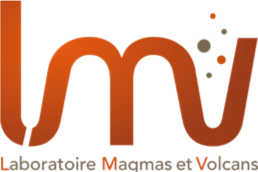The Magmas and Volcanoes laboratory has one of the most complete textural analysis laboratories for volcanic products. This theme benefits from an OPGC observation service: DynVolc.
Resp.: Gurioli Lucia, Le Pennec Jean-Luc, Druitt Tim.
-
Malvern G3S Morpho-Granulometer
The G3S Morpho-Granulometer (from Malvern Instruments) performs rapid, routine, high-resolution analysis of thousands of grains in the micron to millimetre size range. The innovation of the device is based on the combination of four complementary technical modules: (1) a compressed-air grain dispersion system (SDU) on a glass plate illuminated from above or below, and on which the particles have little contact or overlap with each other, (2) an image acquisition system coupled with high-resolution optics that restitutes the projected area of the grains or reconstructs images of the grains at different depths of field and a computerised control system aimed at defining or controlling the parameters of the equipment, and returns data files (size, aspect ratio, convexity, circularity etc. for tens of thousands of grains) and images of each particle in the sample. The LMV is the first laboratory to use this equipment to dedicate it exclusively to volcanological applications.
-
Geopyc 1360 Envelope Density Analyzer
The GeoPyc 1360 analyser measures the envelope density of porous objects of irregular size and shape, which corresponds well to most volcanic particles. The envelope density is the mass of an object divided by its volume (including the volume of porosity). The GeoPyc uses a unique measurement technique using a DryFlo™ (a quasi-fluid medium consisting of small rigid spheres with high fluidity). The sample is placed in a bed of DryFlo, which is then agitated and consolidated. The GeoPyc then calculates the displacement data.
-
AccuPyc II 1340 Helium Pycnometer
The helium pycnometer allows the calculation of the skeletal volume, thus excluding the porosity, unlike the GeoPyc (see paragraph above). The two devices are therefore complementary. The AccuPyc chamber accommodates samples of 10-100-350 cm3 (1×1; 1.8×3.9; 4.6×6; 5.8×13.9 cm). It is particularly suitable for measurements of even very fine vesicularity.
-
Permeameter
The permeameter was assembled in the laboratory, based on the model of Takeuchi et al (2008). It performs permeability measurements of porous objects at pressures of 101-105 Pa for flow rates ranging from 10-9 to 10-5 m3/s, allowing permeabilities of the order of 10-17 to 10-9 m2 to be measured for 1 cm³ samples (based on the Forchheimer equation: Rust & Cashman, 2004).






